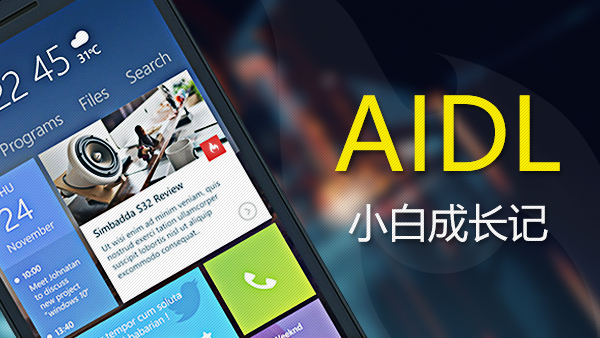introduce:
You can think of a fragment as a modular section of an activity, which has its own lifecycle, receives its own input events, and which you can add or remove while the activity is running (sort of like a "sub activity" that you can reuse in different activities).
To create a fragment, extend the Fragment class, then override key lifecycle methods to insert your app logic, similar to the way you would with an Activity class.
One difference when creating a Fragment is that you must use the onCreateView() callback to define the layout. In fact, this is the only callback you need in order to get a fragment running.
For example, here's a simple fragment that specifies its own layout:
import android.os.Bundle;
import android.support.v4.app.Fragment;
import android.view.LayoutInflater;
import android.view.ViewGroup;
public class ArticleFragment extends Fragment {
@Override
public View onCreateView(LayoutInflater inflater, ViewGroup container,
Bundle savedInstanceState) {
// Inflate the layout for this fragment
return inflater.inflate(R.layout.article_view, container, false);
}
}Just like an activity, a fragment should implement other lifecycle callbacks that allow you to manage its state as it is added or removed from the activity and as the activity transitions between its lifecycle states. For instance, when the activity's onPause() method is called, any fragments in the activity also receive a call to onPause().
Ⅱ.Add a Fragment to an Activity using XMLWhile fragments are reusable, modular UI components, each instance of a Fragment class must be associated with a parent FragmentActivity. You can achieve this association by defining each fragment within your activity layout XML file.
Note:
FragmentActivity is a special activity provided in the Support Library to handle fragments on system versions older than API level 11. If the lowest system version you support is API level 11 or higher, then you can use a regular Activity.
Here is an example layout file that adds two fragments to an activity when the device screen is considered "large" (specified by the large qualifier in the directory name).
<LinearLayout xmlns:android="http://schemas.android.com/apk/res/android"
android:orientation="horizontal"
android:layout_width="fill_parent"
android:layout_height="fill_parent">
<fragment android:name="com.example.android.fragments.HeadlinesFragment"
android:id="@+id/headlines_fragment"
android:layout_weight="1"
android:layout_width="0dp"
android:layout_height="match_parent" />
<fragment android:name="com.example.android.fragments.ArticleFragment"
android:id="@+id/article_fragment"
android:layout_weight="2"
android:layout_width="0dp"
android:layout_height="match_parent" />
</LinearLayout>Then apply the layout to your activity:
import android.os.Bundle;
import android.support.v4.app.FragmentActivity;
public class MainActivity extends FragmentActivity {
@Override
public void onCreate(Bundle savedInstanceState) {
super.onCreate(savedInstanceState);
setContentView(R.layout.news_articles);
}
}Note: When you add a fragment to an activity layout by defining the fragment in the layout XML file, you cannot remove the fragment at runtime. If you plan to swap your fragments in and out during user interaction, you must add the fragment to the activity when the activity first starts, as shown in the next lesson

 随时随地看视频
随时随地看视频




